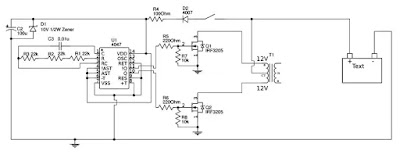How to build Simple 5 V USB Solar Charger (No Battery)? Charge phones/power 5 V gadgets directly in sunlight.
Chosen specs
Panel: 15 W “12 V” nominal mono panel, Vmp ≈ 18 V, Voc ≈ 22 V, Isc ≈ 0.9 A (common size ~300×350 mm)
Output: 5.0 V regulated, up to ~2 A peak (realistic ~1–1.5 A in good sun)
Topology
Panel → blocking diode → buck converter (to 5.00 V) → USB-A
Panel + ── Fuse(2A) ──|<|── +IN Buck (LM2596 or MP1584) +OUT ── +5V → USB-A pin 1
D1: SS34 |
Panel − ─────────────────────── GND ───────────────── GND → USB-A pin 4
TVS(SMBJ24A) across +IN↔GND (optional)
BoM (example parts)
Solar Panel: 15 W, 12 V nominal, Vmp ~18 V, Isc ~0.9 A
D1 Blocking Diode: SS34 (3 A, 40 V Schottky) — low drop, low reverse leakage
Buck Module: LM2596 (3 A rated) or MP1584EN-based mini buck (3 A rated)
USB-A Female Jack: panel-mount or PCB type
Fuse (Panel+): 2 A blade or mini inline
TVS Diode (optional): SMBJ24A across buck input
Cable: 20–22 AWG for short USB, 18 AWG from panel to buck if >0.5 m
Enclosure: Small IP65 junction box, cable glands
Build notes
Set buck to 5.00 V with a multimeter before connecting a device.
Many LM2596-USB boards include data-pin resistors for phone charging. If using a plain USB jack, add 49.9 kΩ pull-downs or a “dumb charger” divider (D+/D− short or 2.0 V/2.7 V depending on device). Most modern phones accept D+/D− short.
Mount SS34 in series with panel + (stripe towards buck).
Testing
Measure panel Voc in sun: ~20–22 V.
With panel connected and no load, verify buck input 16–20 V, output 5.00 V.
Plug a 5 V dummy load/phone—expect 0.5–1.5 A; output should hold 4.9–5.1 V.













